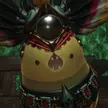Escape from Tarkov's Hideout explained
Here is everything you need to know about your Escape from Tarkov Hideout.
The Hideout is the be-all and end-all of your Escape from Tarkov career. It might take some time and lots of money to fix it, but once you get your hideout into an acceptable state it will take care of you. But if this is your first time in Tarkov all of this can be a little overwhelming so we've compiled this handy guide for you to make things easier.
Knowing where things are is half the battle

Source: Battlestate Games
The Hideout is your home base. At the start it is nothing more but a rundown bunker but with a little love and care it turns into a fully functional forward operating base. Not only can you craft some of the better healing consumables, quest items, and pieces of equipment here but it can also serve as a steady source of additional income. Once you’ve expanded a little you can use it to heal up between raids or even train certain skills. Just keep in mind that building out your hideout takes time, going after certain items can be very frustrating. The game will always indicate materials needed for an upgrade with the hideout icon in the bottom left corner.
Building out your hideout before you have access to the Flea Market is a herculean task. Not only do you need to scavenge, loot, and plunder every toolbox, hidden cache, or filing cabinet, but you also have to make it out alive. Maps like Customs, Interchange, and Factory offer a lot of materials and are best obtained while being a Scav.
Playing as a Scav means joining a raid that is already in progress and taking over one of the AI enemies. While most of the hotspots for loot have already been shifted through, you don’t have to deal with other Scav and can loot to your heart's content. Since most players will go after big and valuable items, materials are often left untouched. The cargo area and offices in Interchange’s mall for example are usually rife with toolboxes and filing cabinets that PMCs tend to skip. The hidden caches are also worth looking for but these spawn randomly now so you might want to consult a map and check potential spawns.
Once you hit the Flea Market, the work begins

Source: Battlestate Games
Only once you reach the player-controlled Flea Market you can seriously try and build out your hideout. We had wipes where we didn’t find a single AWL until after reaching level 15. It's still worth getting everything though and selling in the Flea Market to put the money you earn towards the materials you need.
Unless you have one of the special editions of Escape from Tarkov, building out your stash should be your top priority. It's costly and very resource-intensive but having just two or four more lines of inventory will make your life a lot easier. Later on, you can build a weapons rack and a dressing room which allows you to store weapons and equipment separately without special containers.

Source: Battlestate Games
The Cultist Circle, which can be built fairly early, should also be on your priority list. Once it's constructed, you can offer valuable items from your stash in exchange for rare materials and even items needed for quests. In the early goings of your progress, you should focus on the workbench and your amenities. The Lavatory, Water Collection, Medstation, Nutrition Unit, Heating, and Rest Space are all useful in their own way, be it to craft consumables like healing items or food or to just passively heal up in between raids.
Again, once you hit level 15 you can just buy most of the materials you need off the Flea Market. Sometimes the money spent on them is not worth it but it beats banging your head against a wall.
That should cover everything you need to know about your Hideout in Escape from Tarkov. For more on Battlestate Games’ extraction shooter check out our guide to farming EXP or which maps you should check out first as a new player.
-
Timo Reinecke posted a new article, Escape from Tarkov's Hideout explained


